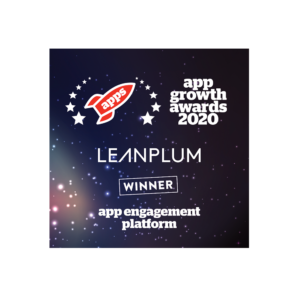Emoji Marketing
Interested in Leanplum?
What is emoji marketing?
Emoji marketing is the use of emojis in marketing messaging strategy to improve engagement rates. “Emoji” comes from the Japanese words for picture and character. It was invented in 1998 by Shigetaka Kurita, who dreamed up the original set of 176 emojis to convey emotions and thoughts in a visual manner.
How does emoji marketing work?
Emojis are a relatively new tool in the digital marketer’s arsenal, but their effectiveness has been proven time and time again since their inception.
For example, from 2017 to 2018, emoji usage doubled in push notifications. Emojis also lead to higher open rates across channels — emails with emojis see a 66 percent higher open rate, while push notifications see a 254 percent higher open rate when they contain these happy faces. So what is the secret?
When a person sees an emoji, their brain lights up in the same way as when they see a human face. The brain recognizes emojis as nonverbal information, and are therefore processed as emotions. Naturally, more people will want to tap on something that delights them. Sparking the warm-and-fuzzies in your audience is good for business. This helps to reinforce positive messaging that is so critical for marketing.
How can emoji marketing be used as part of a mobile marketing strategy?
Emoji marketing is not to be underestimated. In fact, in some circles, emojis are even considered their own language. As lexicographer Jane Solomon said, “There’s a sophisticated linguistic system around how people are using emojis, and this is something that we take very seriously as people who study language… these are real ways that people are communicating with each other.”
Choosing the right context – international emoji use
What is important when using emoji marketing is to consider the context for which they are used. Specifically, if you run mobile marketing campaigns in multiple countries, it’s imperative to conduct research to ensure that what one emoji means in one region cannot be construed as confusing or offensive in another region.
Regional distribution varies greatly with emojis. Leanplum’s Emoji Trends study reveals the emojis most distinct to certain countries. It turns out, Americans favor the use of the pizza emoji, while Mexicans prefer the humble chili and Italians adore the tomato.
Popular emojis in each vertical
Whether they are used in email subjects or push notifications, certain emojis prove more popular depending on the industry. For example, analysis into mobile games shows that diamonds, trophies, and money bags are all commonly used in mobile messages. On the other hand, travel apps tend to leverage the airplane, hotel, and car emojis. And retail apps use the slot machine, guitar, and football.
For marketers just starting out with emoji marketing, a safe strategy is to use the “power emojis” — popular across regions and verticals — which cover a spectrum of emotions, including smiles, sunshine, flames and a dollar bill.
What marketers should consider
Besides context, marketers should also research their emojis’ compatibility with certain devices. Mobile marketers should check to see how new emojis work on phones not running the latest operating system, or else they run the risk of their emojis being displayed as question marks – not the marketing message they want to relay!
Emojipedia is a great source for marketers, or for a more comprehensive study, you can read Leanplum’s article on upping your emoji game!






